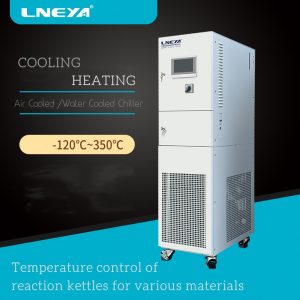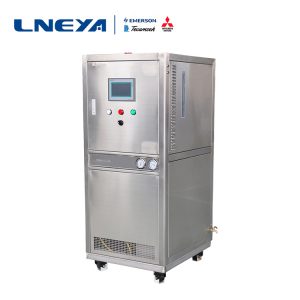What are the components that improve the performance of industrial chillers?
Industrial chillers are indispensable equipment in LNEYA production. With its normal operation, we will have better work efficiency and higher product quality. The refrigeration system of an industrial chiller is mainly composed of four core components: compressor, condenser, expansion valve and evaporator. On this basis, in order to improve the performance of industrial chillers, there are usually some auxiliary components.

(1) Compressors for industrial chillers:
It is the core of the entire chiller. Its quality is enough to affect the quality of a machine, and even the length of its lifespan. The compressor is the power source to ensure refrigeration. The compressor is used to increase the refrigeration pressure in the system, so that the refrigerant circulates in the refrigeration system to achieve the purpose of refrigeration. Common compressor types are open, semi-hermetic and fully-hermetic. Generally, the chiller with chilled water above 0°C adopts a fully hermetic compressor. If the chilled water is below 0°C, the low-temperature chiller uses a semi-hermetic compressor, while the open type is generally used in the refrigeration system with ammonia as the refrigerant.
(2) Condenser of industrial chiller:
It is the high temperature and high pressure Freon of the refrigeration system. After coming out of the compressor, it enters the condenser, releasing a lot of heat to the cooling medium, cooling and liquefying. There are three common types: water-cooled, air-cooled and evaporative. We mainly talk about water-cooled condensers. In a water-cooled condenser, the heat given off by the refrigerant is carried away by the cooling water. The cooling water can be flowed once or recycled. When using circulating water, cooling towers or cold pools are required. Water-cooled condensers have shell and tube, casing, immersion and other structural forms.
(3) Industrial chiller evaporator:
When the freon liquid in the refrigeration system enters the expansion valve and is sent to the evaporator, it belongs to the vaporization process. At this time, a large amount of heat needs to be absorbed, so that the temperature of the cooled medium is gradually lowered, so as to achieve the effect of cooling and cooling. According to the type of cooling medium, it is divided into two categories: cooling liquid (water) evaporator and cooling air evaporator.
(4) Industrial chiller expansion valve:
It is a throttling and pressure-reducing component that reduces the condensation pressure of the refrigerant to the evaporating pressure, so it is an essential component in the refrigeration system. It is called the four major components of the refrigeration system together with the compressor, the evaporator and the condenser.
Related recommendations
-
What should I do if there is noise from industrial cooling and heating chillers?
1091The industrial cooling and heating temperature control equipment adopts a PID algorithm temperature control system to accurately adjust the temperature based on the detected temperature and the set temperature value, improving the drawbacks of tr...
View details -
Manufacturer analysis – 90 ° C single-stage refrigeration system compressor common form
1143There are many types of compressors in the -90 °C single-stage refrigeration system. The most used ones are the piston refrigeration compressors. So, do you know which types? In the refrigeration system industry, the more commonly used refrigerati...
View details -
Cooling heating and temperature control equipment for automotive battery test chamber
939The car battery testing chamber high and low temperature integrated machine is a testing equipment that integrates high and low temperature functions, specifically designed to evaluate the performance and durability of car batteries (such as l...
View details -
Hydraulic system cooling and heating temperature control system
737The application of cooling and heating temperature control system in hydraulic system is very critical, especially in occasions where precise temperature control is required. This system can ensure that the hydraulic oil is kept within the...
View details
 LNEYA Industrial Chillers Manufacturer Supplier
LNEYA Industrial Chillers Manufacturer Supplier












